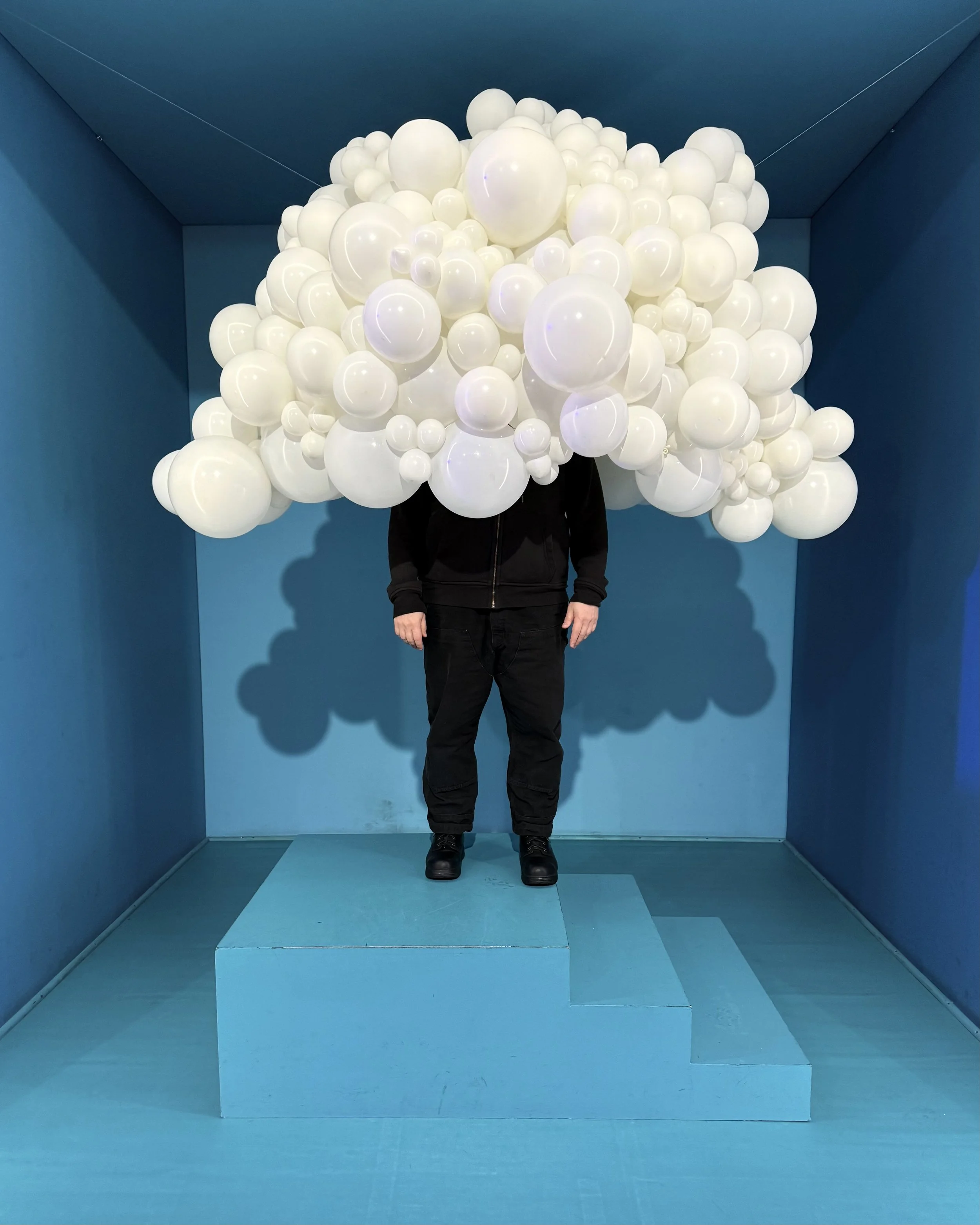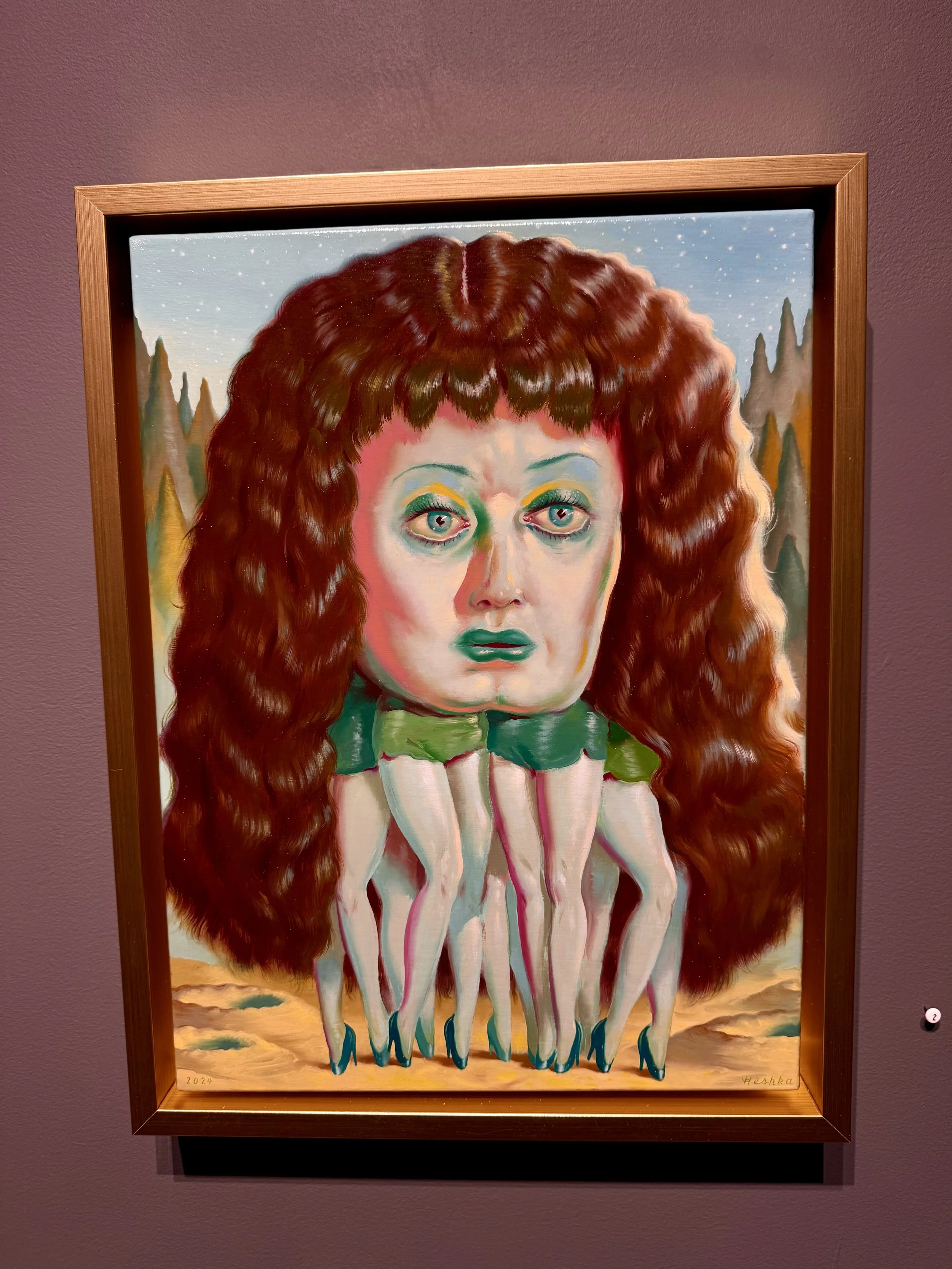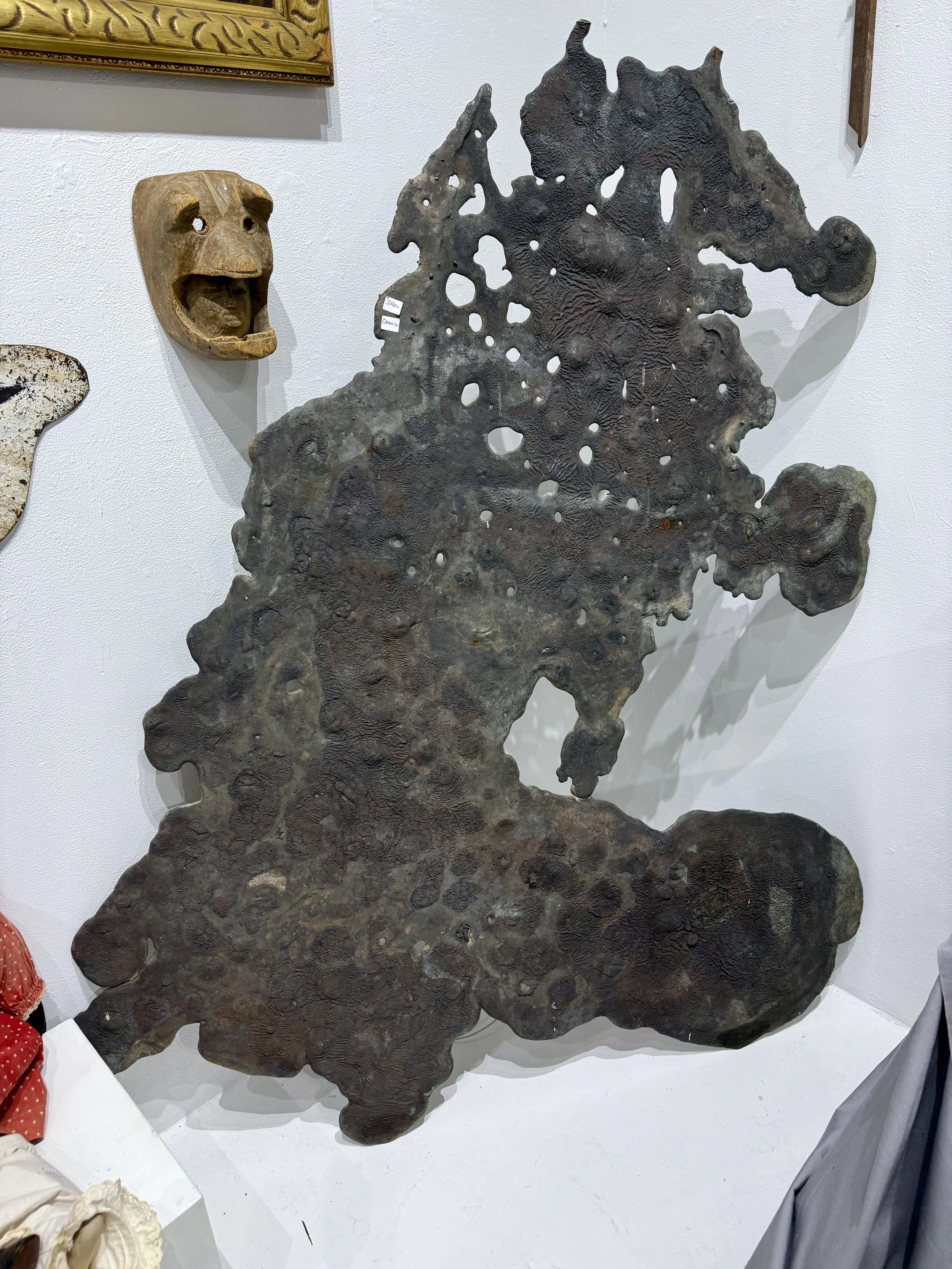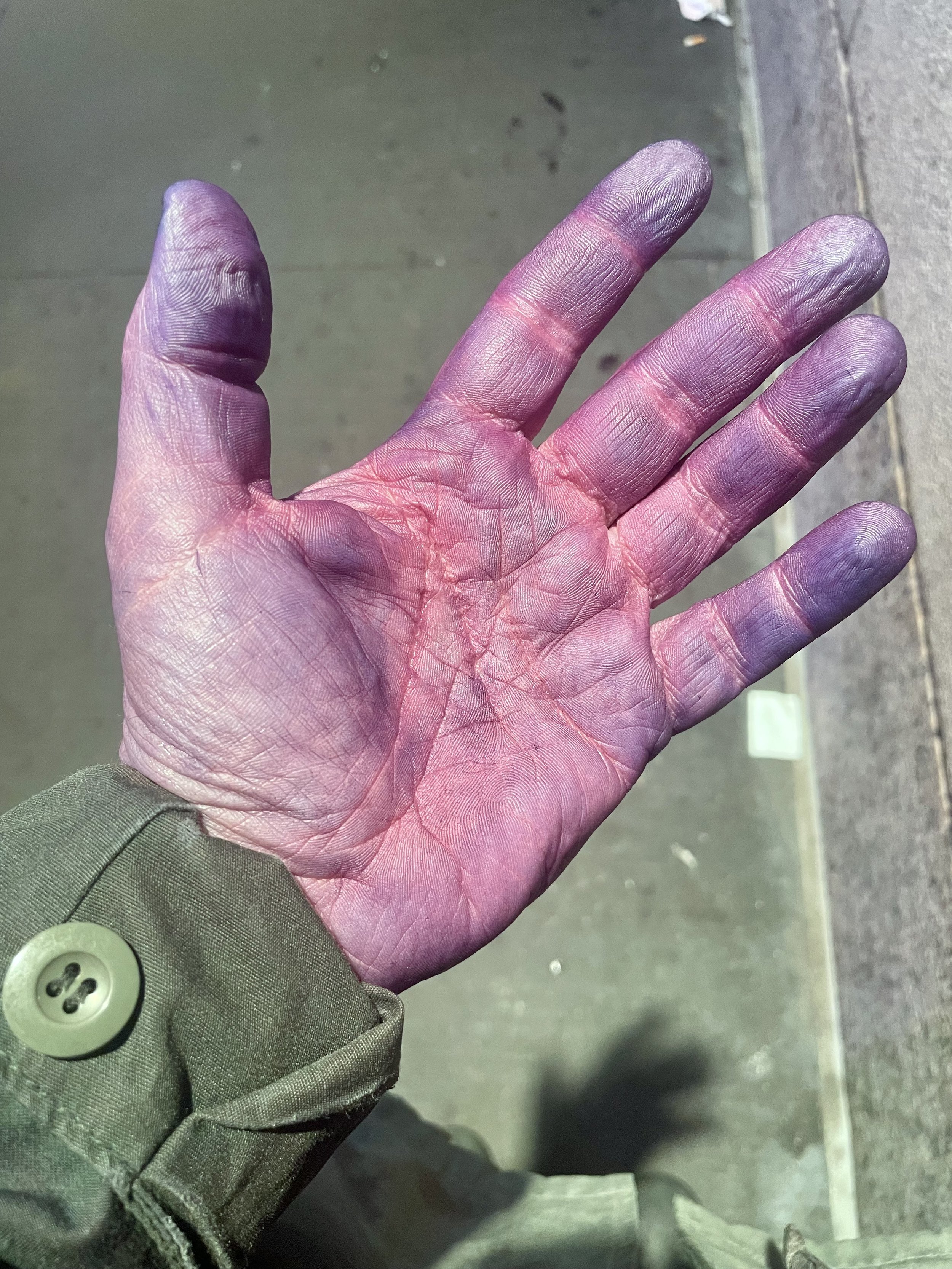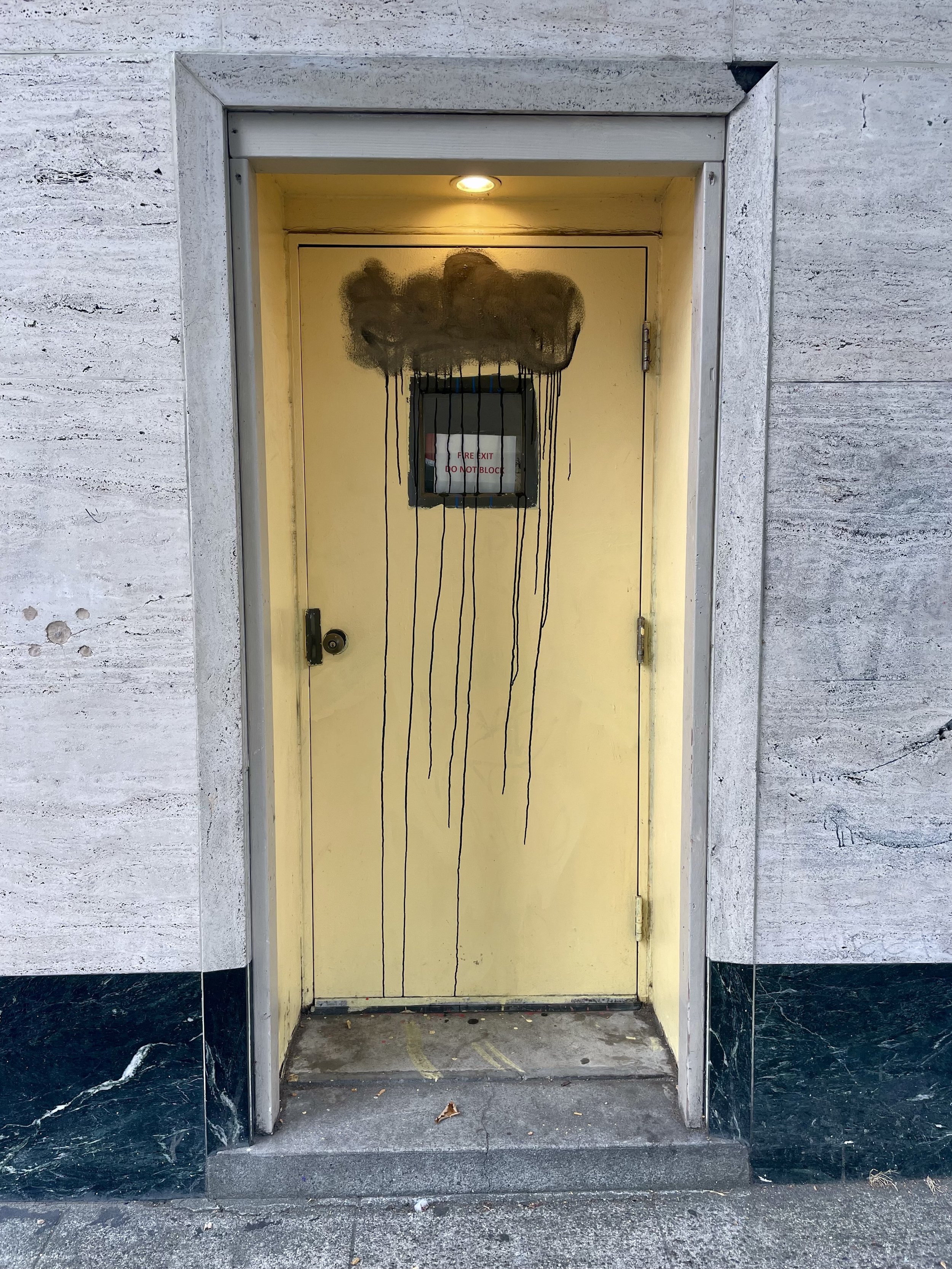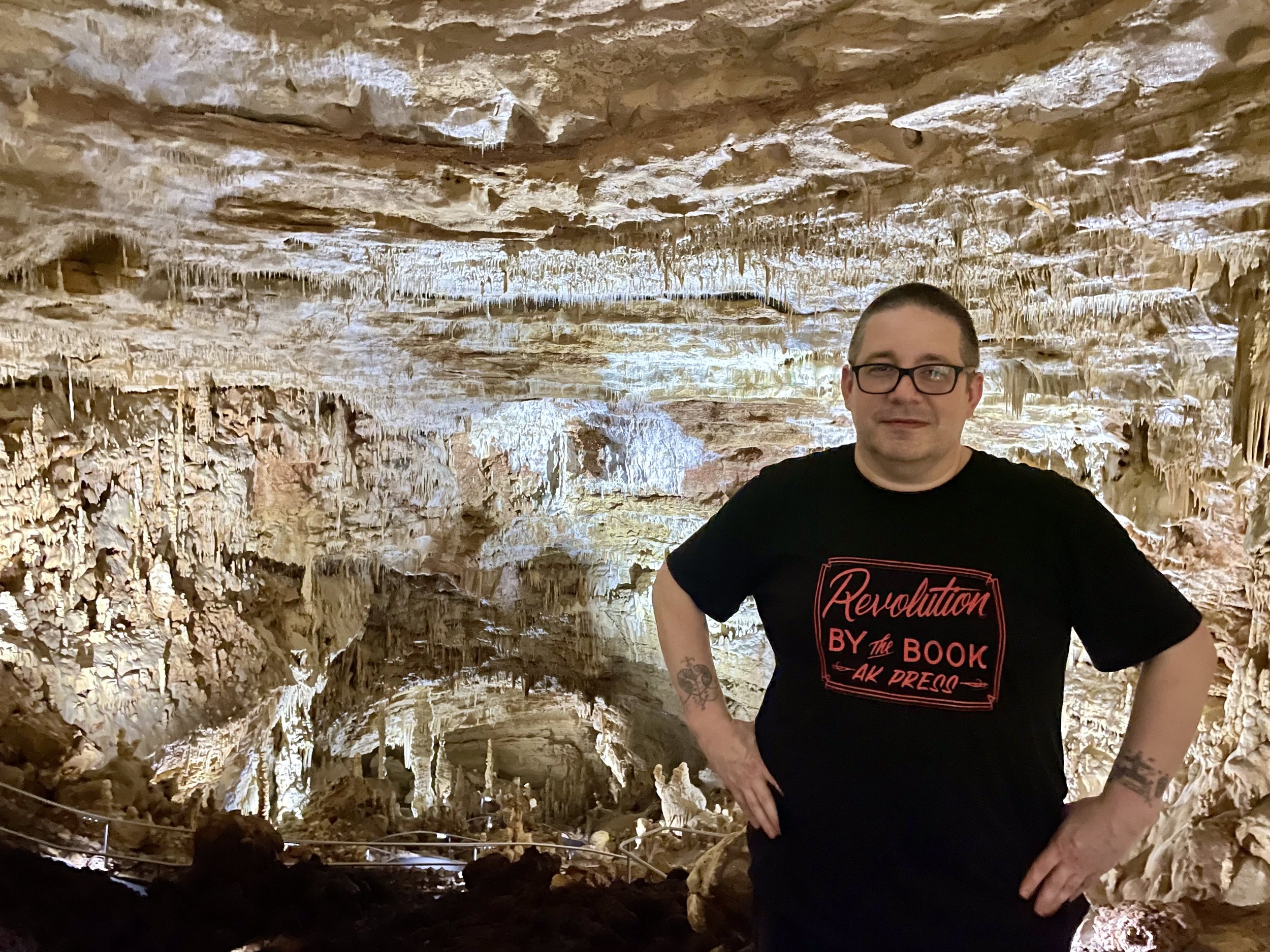It hasn’t been the greatest year for me. I’ve found myself losing my temper more and more often. I’ve been tired, stressed, and overworked. I can’t seem to find enough time for myself and my own projects. I’d prefer to be reading, writing, and collaging, but I seem to spend my leisure time sleeping or doing nothing. Two weeks ago, my hatred of this year peaked. While at work, I overheated and found myself spinning and vomiting. Heat exhaustion had brought on a violent case of vertigo. I spent the night lightly sedated in the emergency room. To the left of me was a man who’d been stabbed in the face. I could hear screaming and cursing all around me, like I was in an insane asylum. Voices from patients I couldn’t see shouted profanity at each other, and also at no one in particular, as the nurses sat by unaffected.
While in the ER, I had an MRI scan and found it to be somewhat entertaining. They put this cage over my face and these big headphones on my ears, then stuck me in this white machine ("I hope you're not claustrophobic!"). I can’t help but compare the hole in the machine to an orifice. Through the headphones, they played this pulsing electronic music, which was extremely beautiful. It was like a simplified Wendy Carlos or old 8-bit video game music. When they discharged me, I was still zigzagging when I walked. I was unsure how safe it was for me to leave the hospital, but they wanted me out. I made it home via Uber and spent the week in bed, tending to a vestibular migraine.
If my head felt like it was going to burst, then maybe it can be seen as a metaphor for the world at large. I’m not one to be long-winded about these things, but the continued onslaught against the Palestinians by Israel and Israel's attack on Iran make it feel like we are tiptoeing closer and closer to World War 3. When you compound this with the current Gestapo-like I.C.E. raids throughout the United States, all I expect from the future is a world of misery, destruction, and death. Why do people want this? What do ordinary people think they can gain from state violence? In the United States, the culture wars have ruined any semblance of a collective identity. Capitalism and religion have poisoned the world, and we have forgotten we are all a part of humanity.
In January, in what I see as a horrific display of the future to come, a homeless woman was mercilessly burned alive on a subway train. Several news sources detailed her life and interviewed her old high school friends. It made me think of how easy it is under capitalism to find yourself one of the undesirables. For me, this was a good reminder that homeless people are not others, they are us. They went to high school with us, worked with us, are our brothers and sisters, and mothers and fathers. They have histories and families and people who love them. As the saying goes, many of us are just a paycheck away from being homeless. This incident coincided with the discovery that one of my ex-partners is addicted to fentanyl and homeless, supposedly living in a tent. She requested some money from me through Venmo in December with S.O.S. in the comment line. Since then, I’ve heard nothing. Will she, too, be set on fire? Will she be murdered or raped? Will she be consumed by drugs? Not long after she requested the money, I had a dream. There was a knock at my door. I looked out the window and saw it was her, but seconds later, when I opened the door, she was gone.
David Lynch also passed away in January. This was not unexpected, but I wonder how much damage the Los Angeles fires had on his troubled health. I could say a lot about Lynch. I admire his unapologetic use of dream logic. My first Lynch film and one of my first ever DVDs was Blue Velvet, which I purchased sight unseen. I’ll never forget the first night I watched it with a girl, and the horny and youthful awkwardness brought about by the scene in Dorothy Vallens’ apartment where she pulls down Jeffrey Beaumont’s underwear. I also remember when Nova and I watched Lost Highway for the first time. It had just come out on VHS, and at the time, Nova worked at Blockbuster, giving us first dibs. But we hated it. It was only until I saw Mulholland Drive several years later, which I also bought on DVD sight unseen, that I understood Lost Highway. In my brain, one film unlocked the other. Now, I consider them both masterpieces and two of my favorite films. I feel like Lynch was truly the only master of art to live in my lifetime. As a surrealist, I consider him a fellow traveler, but not all surrealists feel this way, as he was ignorant of the ideas behind surrealism and its history. What always struck me was how many of his films are secretly about heartache. Most people don’t talk about this. Recurring behind the ethereal motifs is the pain caused by romantic betrayal.
Speaking of Los Angeles, in February, my friend Teysha invited me to stay with her in West Hollywood. I was able to decompress there as we mostly just hung out around the apartment and played the video game Fall Guys. I convinced Teysha to take me to the Corey Helford Gallery for a fantastic Ryan Heshka show. Heshka’s work has a sexy post-war monster movie vibe, but with strong dream-like undertones. Imagine if Tod Browning or James Whale were surrealists. My favorite piece was this one of a woman’s huge head, which almost looks like a mirror image instead of a complete head, the symmetry starting vertically at the chin. But then the bottom half of the woman is a bunch of women’s legs. This is a curious kind of poetic substitution, where the female body is reduced to just her legs. After this, Teysha convinced me to go with her to the nearby Balloon Museum. I was skeptical at first, but the Balloon Museum had many playful exhibits, like a pool filled waist-high with black balls or an almost room-sized ball with chalk tips placed around its surface, causing it to create abstract markings on the walls as it’s pushed against them.
I also saw some paintings by surrealist Jorge Camacho while in Los Angeles. The Francois Ghebaly Gallery has spaces in both New York and Los Angeles, and both spaces were showing his work. All these works of Camacho at both locations were made in the late 60s and early 70s and contain the same dusky backdrop. They remind me of towers or assemblages on shish kebabs, weird figurines of flesh and wood that tower up from the ground, many of them appearing dependent on the ground, anchored to something hidden below. One even had the corpse of a unicorn on it, pierced like one of Vlad the Impaler’s victims.
Another exhibit I went to was my annual visit to the Nameless Art Show. This was, once again, run by Art Without Intent, the same group that runs the Found Object Show. There, amongst all the nineteenth-century figurines and masks, I saw a formless piece of bronze, apparently created when the bronze was spilled and then it cooled into this weird formless shape. I love this kind of work, something completely involuntary, but still seen as art. Another recurring event for me, and of a similar vein, was the Outsider Art Fair in March. Like previous shows, the fair boasted a lot of familiar names from the self-taught world: Scottie Wilson, Minnie Evans, Howard Finster, Adolf Wolfli, Augustin Lesage, and so on. I was pleased to see some works by punk rocker Nick Blinko in the show this year. The artist I enjoyed most this year was the Irish painter Sarah Lee. She paints these self-portraits that at times resemble the simplest Leonora Carrington works. They usually involve her being seduced by a wolf or tiger. When I looked her up on the internet, I found that many of her pieces have people in masks not unlike James Ensor. I find her work devilish and erotic.
In June, I went to a small surrealist collage show at the Di Donna Gallery, a location I’d avoided before because you have to be buzzed in. There were lots of amazing pieces, but my favorite was surprisingly a collage by Dali with this big white cat surrounded by these nymphs. The whiskers were dripping wine, and Dali had painted goblets in the nymphs’ hands, catching the wine. There were a lot of familiar names at this show: Aragon, Breton, Ernst, Eluard, Styrsky, but there was a surprising amount of work by Georges Hugnet, and someone new to me, an artist named Max Bucaille.
A few weeks later, I had the pleasure of attending the closing event for Joe Coleman’s Carnival show at the Jeffrey Deitch Gallery. This was a wondrous collection of works curated by Coleman on various themes related to the sideshow. The entire room was filled with costumed mannequins that reminded me of the mannequins from the International Surrealism Exhibition in Paris in 1938. There were also paintings of sword swallowers and clowns, sculptures of fortune tellers and oddities like Johnny Eck, a merry-go-round with beaded creatures on it, a miniature Coney Island, and two large wood figurines in coffins. At the closing event, I saw a fun performance by burlesque artist Dirty Martini. She was wearing an outfit where her left arm was a swan. It was a unique blend of the striptease with ventriloquism. My favorite piece on display was Narcissister’s automaton sculpture. It was a female figure leaning backward. Beneath her were used bicycle parts that, when the crank was turned, caused the head to move up and down. I’m always a sucker for automata!
I attended two events at Pioneer Works this year. The first was a conversation between Eileen Myles and Ariana Reines. Both Myles and Reines discussed the coincidental birthdays and death dates of their parents and current events. They also discussed how untraditional and anti-story Reines’ new book, A Wave of Blood, is. They pushed the idea that storytelling is overdone and that there needs to be something more. It’s too easy to go from point A to point B, and maybe they feel that betrays the poetics. I remember Reines said, “Writing is like bleeding,” and this seems to be a theme for the book: menstruation, bloodletting, cutting.
The second event was the opening night of the Ende Tymes Festival, featuring a top-tier collection of the best of noise and experimental music. Charmaine Lee had some “feedback gun” that looked like a megaphone. She pointed it at the crowd, and it gave off this loud, low tone. The droning sound was so loud that it shook the dust off the pipes on the ceiling, causing particles of dust to slowly drift down on everyone. I could feel the vibration in my body. The best part was when she pointed the megaphone at her face and screamed into it. Aaron Dilloway was the headliner and was impressive as always. He looked like a substitute teacher, dressed in a button-up shirt and slacks. The combover balding head didn’t hurt, either, but his biker boots gave his secret away. Dilloway has an amazing way of using spasms in his work. At one point, he had two small bows. He put one in his mouth and used the other to strum it. He did this violently, shaking about, like the victim of some evil, invisible dentist. His live acts are like a cross between a Dadaist performance and Reagan’s bedroom antics from The Exorcist.
Most of the notable punk shows I went to over the past six months were held outside or in secret locations. I saw Dollhouse and Melissa at the old punk headquarters in Chinatown. On Friday the 13th, I saw Olympia’s Physique in the now-famous derelict train tunnel. Playing with them was an anarcho-punk band called Kaleidoscope, which I loved. Kaleidoscope is not a new band, but this was my first time catching them. The vocalist had a pre-Rollins Black Flag feel to his voice, a sort of Southern California snarl, but the guitars were noisy, heavy, and almost grunge-like. I guess these guys are also members of Tower 7. I was able to catch an old anarcho-punk band, Detestation, play in the rain at Maria Hernandez Park. The members of Detestation looked familiar to me, and that’s because I later discovered several of them are actually from Portland! Speaking of Portland, I caught two more Portland bands these last few months: pronk (which I guess means “progressive punk”) band Nasalrod opened for Alice Donut at the Brooklyn Monarch and the DIY punk band The Taxpayers, who I hadn’t seen since they played the Sea Shanty on Russet Street over fifteen years ago, headlined at the Meadows.
The musical highlight of the past six months, though, was seeing Devo live at the Brooklyn Paramount. Devo had a flashy multimedia introduction and three outfit changes that spanned their history. Seeing them perform “Peek-A-Boo,” I couldn’t help but think of what a weird song it is, almost like a children’s song. But it’s great live! Once they got to "Uncontrollable Urge" and "Mongoloid" I was in pure heaven. They finished with "Gut Feeling" and a version of "Beautiful World" where Mark Mothersbaugh dressed as Booji Boy and sang in the Booji Boy voice. During "Beautiful World,” Booji Boy talked about how, when they first came to New York, William Burroughs pinched his ass. Looking around the crowd, I wasn’t sure if anyone in the audience even knew who William Burroughs was.
What I’ve been watching:
Gandahar (Rene Laloux, 1987)
She is Conann (Bertrand Mandico, 2023)
The Vourdalak (Adrien Beau, 2023)
A Boxer’s Omen (Kuei Chih-Hung, 1983)
Bring Her Back (Danny and Michael Philippou, 2025)
What I’ve been listening to on the subway:
VS. - Leather Complex
Kaleidoscope - Decolonization
Devo - Q: Are We Not Men? A: We Are Devo!
Lana Del Rabies - Shadow World
Prince - Purple Rain
What I’ve been reading:
Desmond Morris - 101 Surrealists
Ariana Reines - Wave of Blood
Ariana Reines - The Rose
Joseph Cornell - Dreams
Michael Richardson, ed. - The Dedalus Book of Surrealism: The Identity of Things
Publishing note:
An old text of mine from Black Giraffe #2, “Base Poetics,” was translated and published in the thirteenth issue of Natan Schäfer and Jasmina Schmidt’s Brazilian publication Caça E Pesca.
